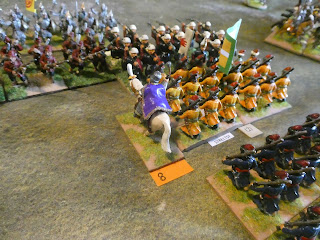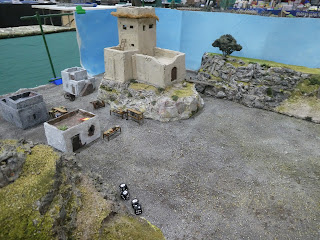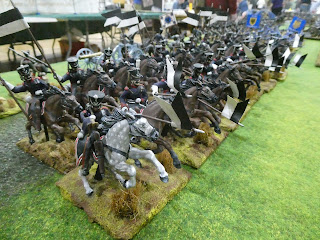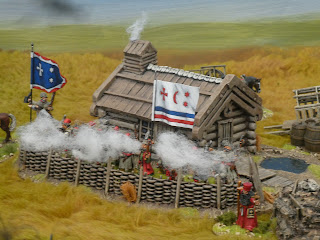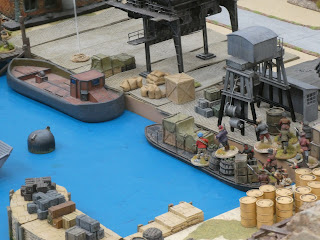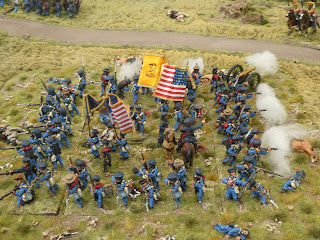A couple of weeks ago I posted (link) that our Sunday game following the Phalanx Show would be an Eastern Renaissance battle. What follows is a brief resume of that battle. The situation was that an Allied army of Muscovites, Poles and Cossacks was trying to stop an Ottoman army (with some Tartar allies) from attacking the city of Kiev.
After a fairly ineffective exchange of long range artillery fire, the Ottoman forces began their advance. The two Ottoman cavalry wings, preceded by a screen of skirmishing horse archers attempted to drive off the Allied horse archers. In the centre a number of Azab units, both missile and melee moved forward, with Janissary units in a second wave.
 |
| Azab units about to cross the gully on the Ottoman right |
The Ottoman advance was not very well co-ordinated (the Azabs could not be given brigade orders, so had to test unit by unit for movement), but did draw the fire of the Allied infantry, which was the Ottoman commander was hoping would happen. One Azab unit did pay a heavy price, being routed before it could even fire it's opening volley.
As the Ottoman infantry neared the Allied centre the Allied units were tempted to attack piecemeal, with varying results.
| Ottoman infantry bearing down on the Allied centre |
 |
| The Ottoman right wing cavalry crossing the gully and pushing back the Alliance left wing cavalry |
 |
| The Allied left |
 |
| The Boyar cavalry on the Alliance right are committed to hold back the Ottoman light cavalry |
 |
| However, approaching are the provincial sipahi |
 |
| The participating Gentlemen Pensioners Will, Chris, David, John and Steve |






